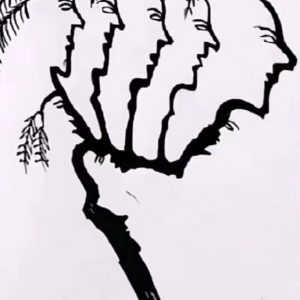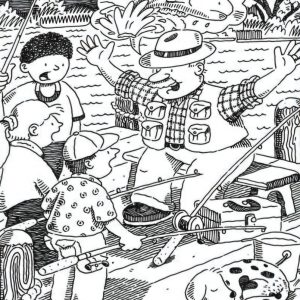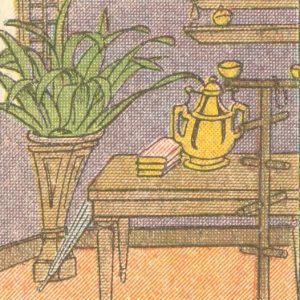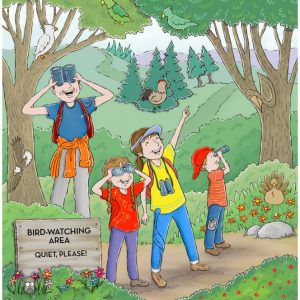Nature’s Hidden Faces: Exploring Deer Illusions in Art and Wildlife
The Magic of Pareidolia: Seeing Faces Where None Exist
Have you ever glanced at a tree trunk and suddenly spotted a human face staring back? That delightful trick of the mind—pareidolia—makes us detect familiar patterns in random forms, especially faces. In this striking illustration, two graceful deer stand shoulder to shoulder, their antlers arching skyward. But look closer, and you’ll discover a third visage hidden between their necks: the subtle profile of a human face, seamlessly woven into the wildlife tableau. This illusion bridges the gap between observer and observed, reminding us that art and nature often whisper secrets to those who look closely.
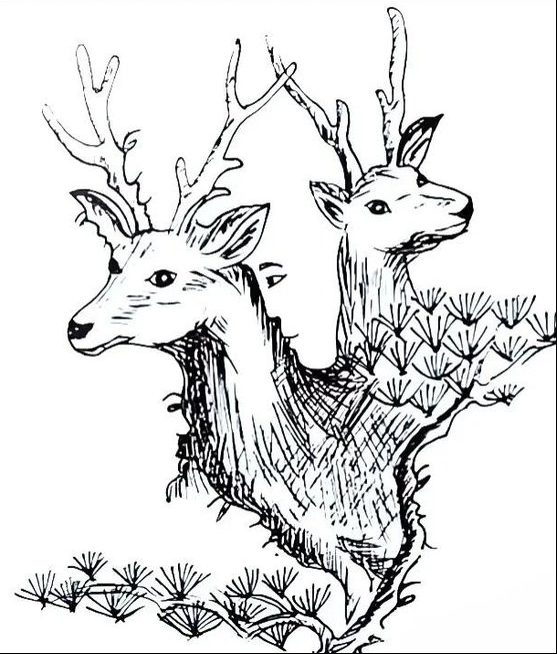
How Artists Craft Wildlife Illusions
Creating a successful animal illusion takes more than a clever idea; it requires precise planning and a keen eye for pattern. Here’s how illustrators bring these hidden images to life:
- Contour Alignment: The artist identifies natural curves in the animal’s body—here, the deers’ necks—and uses them as the outline of the hidden face.
- Negative Space Mastery: By carefully balancing the white space between the two deer, the human profile emerges without additional lines.
- Selective Detailing: The deer’s ears, eyes, and antlers double as hairline, eyebrows, and horns of the hidden figure, directing your gaze to dual interpretations.
- Subtle Shading: Light hatching and crosshatching add depth to the deer—while the face remains unshaded, popping forward as an optical surprise.
These techniques come together like a visual handshake, guiding your brain from “just deer” to “is that a person?” in a heartbeat.
Pareidolia in the Wild: Nature’s Own Illusions
You don’t need a pen and ink to stumble upon nature’s hidden faces. Pareidolia abounds outdoors:
- Rock Formations: The “Old Man of the Mountain” in New Hampshire once looked unmistakably like a human profile in granite.
- Cloudscape Portraits: Ever seen your grandmother’s silhouette drifting across a summer sky? You’re not alone—cloud watchers catalog endless face-like shapes.
- Tree Bark Visages: Knots and moss patches frequently align into grinning faces, especially after rain darkens the wood grain.
- Animal Markings: Some leopards’ spot patterns resemble eyes or human features—nature’s own camouflage and artifice in one package.
Spotting these fleeting mysteries connects us more deeply with our environment, turning an ordinary walk into an impromptu treasure hunt.

Psychology Behind Face Perception
Why does our brain leap to identify faces so eagerly? Science offers a few reasons:
- Evolutionary Advantage: Early humans needed to recognize friends, foes, and predators quickly. The brain’s fusiform face area lights up at the sight of face-like patterns, speeding social and survival decisions.
- Pattern Recognition: Our minds seek order in chaos. Faces are highly significant stimuli, so the brain favors interpreting ambiguous shapes as eyes, nose, and mouth.
- Emotional Connection: Seeing a face—even an imagined one—triggers empathy and emotional engagement, making art and landscapes feel more relatable and alive.
Understanding pareidolia not only deepens our appreciation for optical illusions but also reveals how wired we are for social connection.
Creating Your Own Deer Illusion Artwork
Inspired to craft a similar hidden-face masterpiece? Try these steps:
- Sketch the Wildlife Base: Start with two or more deer or other animals positioned closely together.
- Identify Natural Gaps: Look for the negative space between bodies—this will form the hidden face or figure.
- Refine the Profile: Lightly pencil in the face’s outline, aligning features with antlers as “hair” or neck curves as “jawlines.”
- Inking Techniques: Use varied line weights—thicker for the animals, thinner for the hidden portrait—to prioritize one motif over the other.
- Adjust and Balance: Erase or soften unnecessary lines until both images are equally plausible, then finalize with pen or digital inking.
As you practice, you’ll discover the thrill of hiding and revealing worlds within a single drawing.

Spotting Hidden Faces: A Fun Family Activity
Pareidolia makes for an engaging, screen-free game. Here’s how to host your own “Where’s the Face?” challenge:
- Collect Illustrations: Gather a mix of optical illusion drawings, photographs of clouds, tree barks, and abstract patterns.
- Set a Timer: Give players 30 seconds per image to locate the hidden face or figure.
- Award Points: Faster finds earn more points; creative bonus points go to the most unique observations.
- Create Your Own: Encourage participants to draw a quick optical illusion of their own—the wackier, the better!
- Share and Discuss: Compare discoveries and laugh over near misses—every face spotted deepens appreciation for nature’s artistry.
This simple exercise turns pareidolia into a playful family bonding experience and sparks artistic curiosity.

Why Illusion Art Resonates Across Generations
From ancient cave paintings to modern digital art, hidden-face illusions captivate minds young and old because they:
- Engage Curiosity: That “Aha!” moment when the hidden image clicks delivers a satisfying rush.
- Encourage Mindfulness: Spotting subtle patterns trains your focus and patience—qualities often lost in our fast-paced world.
- Bridge Disciplines: Illusion art merges biology, psychology, and design, offering a rich, interdisciplinary learning opportunity.
- Foster Creativity: An illusion invites viewers to see the world from multiple perspectives—fueling innovation and empathy.
Whether you’re an art enthusiast, nature lover, or psychology buff, illusions affirm that reality is layered, waiting for keen eyes to peel back the surface.
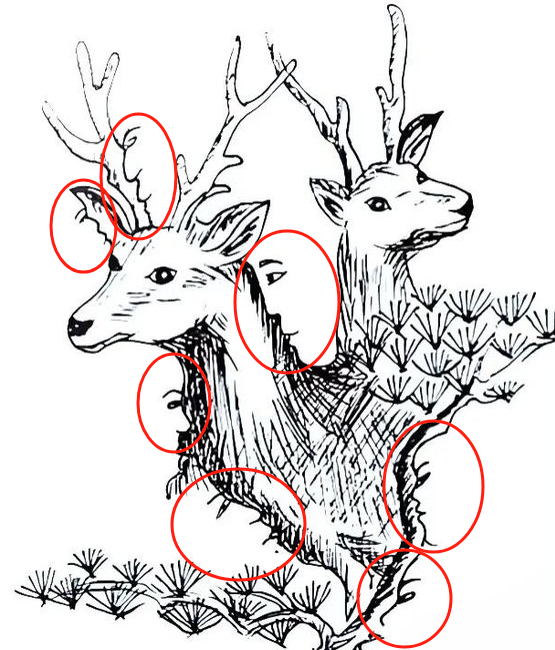
Conclusion: Celebrate the Hidden Wonders Around You
In that compelling ink illustration of two deer concealing a human profile, we witness the seamless dance of nature and imagination. From the psychology of face recognition to hands-on tips for creating your own hidden portraits, the world of pareidolia brims with surprise and delight. So next time you wander through a forest, gaze at the clouds, or leaf through an art book, stay alert—you might just stumble upon a hidden face, reminding you that wonder is never far from where you look.
